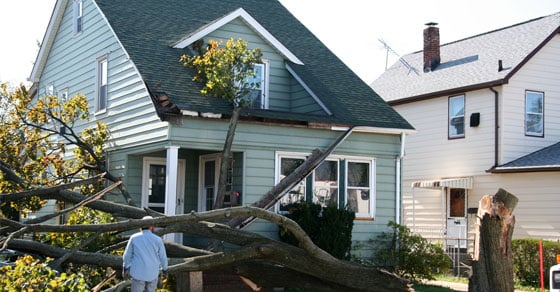There have been plenty of headlines this summer about the extreme heat. Elevated temperatures not only tax the electrical grid, but also lead to more tornados and severe thunderstorms that can result in significant damage to personal residences.
One consequence of this for employers is that you could find yourself fielding more requests for hardship distributions from your 401(k) participants. With this in mind, it’s important to ensure that your HR staff and employees are well-prepared for the approval process.
The tax deduction connection
Under the casualty loss safe harbor, a 401(k) plan may make a hardship distribution to pay for repairs to a participant’s principal residence that would qualify for a casualty loss deduction for federal income tax purposes.
The casualty loss deduction is generally available for eligible “losses of property not connected with a trade or business, or a transaction entered into for profit, if such losses arise from fire, storm, shipwreck, or other casualty.” The deduction cannot be claimed unless the losses:
- Are at least $100,
- Exceed 10% of the individual’s adjusted gross income (AGI), and
- Are attributable to a federally declared disaster for taxable years beginning before 2026.
However, neither the 10% AGI threshold nor the federally declared disaster requirement applies when determining whether losses qualify for the casualty loss safe harbor of a 401(k) plan.
Self-certification now allowed
Under previous rules, to determine whether the participant qualified for a hardship distribution under the casualty loss safe harbor, plan sponsors had to verify that 1) the damage was to the participant’s principal residence, not a second home or other personal property, and 2) the cost to repair the damage was $100 or more. To do so, plans sponsors needed to obtain documentation as well as a written statement from the participant requesting the hardship distribution.
However, at the very end of 2022, the SECURE 2.0 Act was passed into law. It markedly simplified the approval process for hardship distributions — including those requested to cover casualty losses. Now participants can “self-certify” that they meet the applicable conditions.
Doing so essentially amounts to providing the plan administrator with a written statement, which can be electronic if it meets regulatory requirements, that the individual in question “has insufficient cash or other liquid assets reasonably available to satisfy the need,” according to the IRS. As the plan sponsor/administrator, you may accept self-certification so long as you don’t have actual knowledge that the participant’s statement is “contrary to the representation” (that is, false).
Participants must also first obtain other available distributions from your 401(k) plan and certain other employer-provided plans.
A good time for a reminder
Whether or not you’ve already dealt with an uptick in hardship distribution requests, now may be a good time to remind your 401(k) participants of the rules involved so they have a realistic understanding of the process should disaster strike. We can help you articulate those rules as well as assess the tax and financial impact of any other employee benefits your organization currently offers.
© 2023




